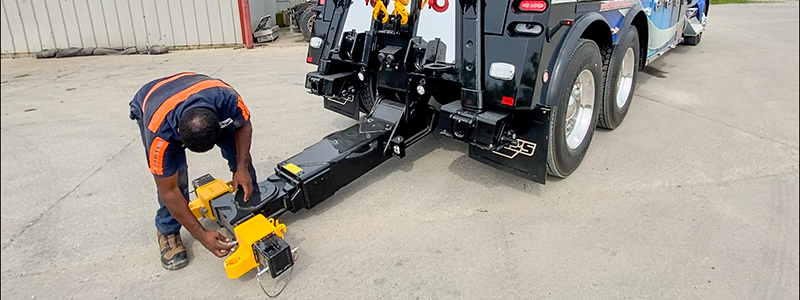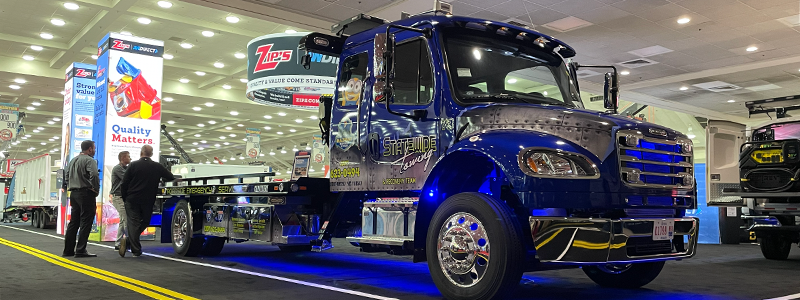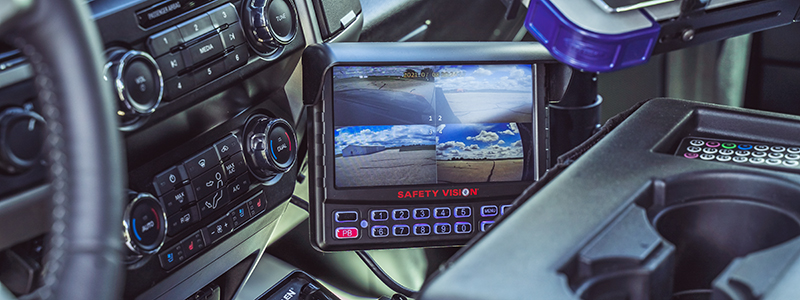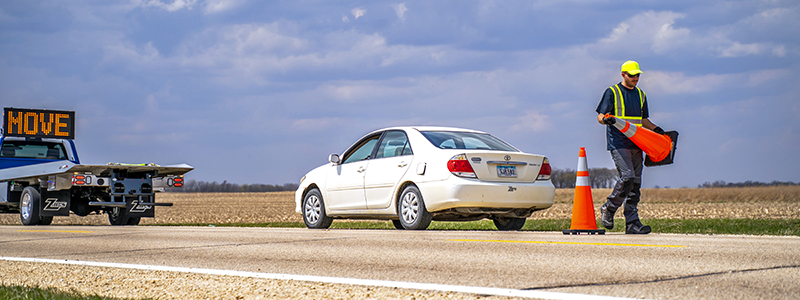Tow Truck Pre-Trip Checklist

Why should you do it? The primary reason is we all want to sleep in our own bed at night!
As a tow truck (commercial motor vehicle) operator, we have a responsibility to ourselves, our family, the company and the motoring public to operate a truck as safely as possible.
We also should have an interest in the bottom line of the company we work for, and to be profitable by minimizing major expenses and risk. It is part of our job to “protect the house” as they say at our children’s sporting events. We all understand upkeep and repairs on a truck are not without a cost, but major repairs incur greater costs, greater downtime and a greater loss of income for both the operator and the company.
Through our shop at Zip’s Truck Equipment, we have seen an increase in major repairs that would have been minimized by catching the problem(s) before they became catastrophic. Some examples of these include wheels and wheel assemblies that have left the truck, ruined engines and transmissions from lack of oil, broken hoses, as well as hydraulic pumps and motors.
Minimize your downtime
Let’s investigate it and see how a better Pre-Trip including the wrecker or car carrier body can help minimize the downtime, expenses, and limit our risk exposure. As commercial operators we are all familiar with the DOT Pre-Trip inspection guide and its helpfulness.
I personally like to start my pre-trip when I’m walking out to any vehicle from a car or motorcycle to a tow truck or semi. Take a good look at your vehicle when you’re walking up to it. Is it sitting level or not? Look for signs of a low or flat tire or bad or broken spring, or even worse a frame problem.
If the vehicle has keyless entry, push the button to unlock it as you approach. Are all the correct lights illuminated? Do an eye sweep of the area under the vehicle: Is there an oil or coolant spot on the ground or component surface? If you park your truck in the same spot every shift change, is the spot getting bigger? Get it fixed! A $20 gasket and labor to put it in are always cheaper than a new engine or transmission.
Are any of the hoses hanging that should be secured to prevent tearing off? Are there any light wires or air lines hanging that should be secured to prevent tearing off? Look at your winch cables: Are they showing frayed strands or burnt look on synthetics? Now is the time to get one ordered!! Don’t wait until it breaks on a call, as downtime costs money.
When looking at the chassis suspension and frame, look at the equipment frame or carrier deck as well for cracks and rust streaks. Look at the body mounting bolts for a rust streak or a shiny spot around the head as they are both signs of a loose bolt. If visible, look at the boom or carrier deck lift cylinder ends, or the carrier deck hinge pin for rust streaking, as this is a sign of a seized pin and could break during a recovery or transport.
If the unit has an L-Arm style wheel lift, operate the locks or slides and repair as needed. The last thing you need is to fight an L-Arm on the side of the road. If your ratchet securement straps are secured to your L-Arms, inspect and repair as needed. Again, you don’t want to fight a sticky ratchet on the side of the road.
This truck walkaround time is also a good time to look at your toolbox doors and latches: Are your doors latching? Are the door hinges free? Are the bottoms of your toolboxes soft from rust degradation? This may not be the correct time to get it fixed, but get it reported and on the fix list. Keep in mind that a toolbox door popping open or a toolbox bottom dropping goods on the roadway is deemed loose cargo and could incur a fine or an out-of-service ticket from the DOT. Those types of DOT violations could incur an immediate cost due to lost goods and a fine but a greater chance of higher insurance cost due to your DOT rating.
Lights need to work
Lights, lights and more lights. We have learned from our associates in the school bus business to operate our warning lights on a pre-trip. The DOT wants our marker lights to work correctly so the motoring public doesn’t run into us; but are we doing our best to protect ourselves, our customer, our truck, the accident scene and the vehicle we are going out to recover from the motoring public as well? Operate your warning lights on your pre-trip!!
Do you have P.P.E. (Personal Protective Equipment)? Hint, hint. You should if you don’t! Is your P.P.E. up to par? Is it clean and can you be seen? Is the fire extinguisher full, accessible and ready to go or is it buried in the bottom of the toolbox? Are your traffic cones and triangles ready for deployment?
Please follow your company’s policies and procedures for reporting, repairing and/or replacing needed items. Please keep in mind that some repair items may take a few days to secure and/or perform, but they will come at a lesser cost than next day freight on a hurry-up or a catastrophic failure.
This quick pre-trip discussion is by far not all inclusive. You as the truck operator or owner are a key component to maximizing safety, efficiency and the bottom line.


%20blog%20thumbnail.png)








